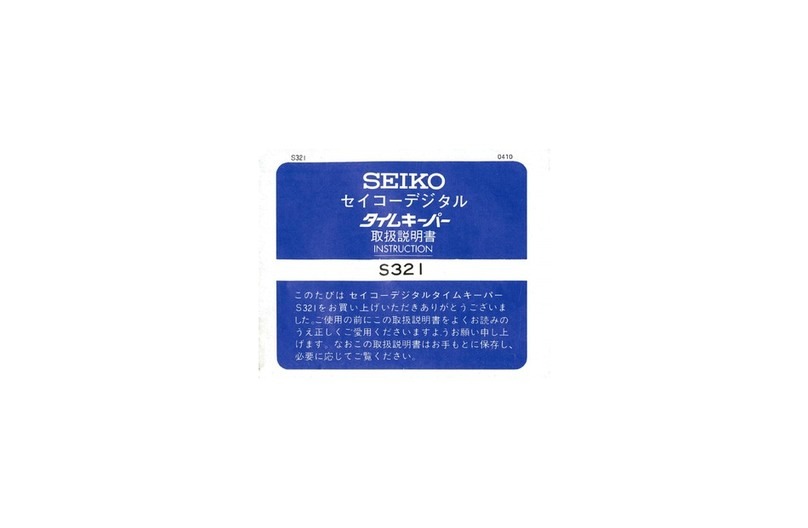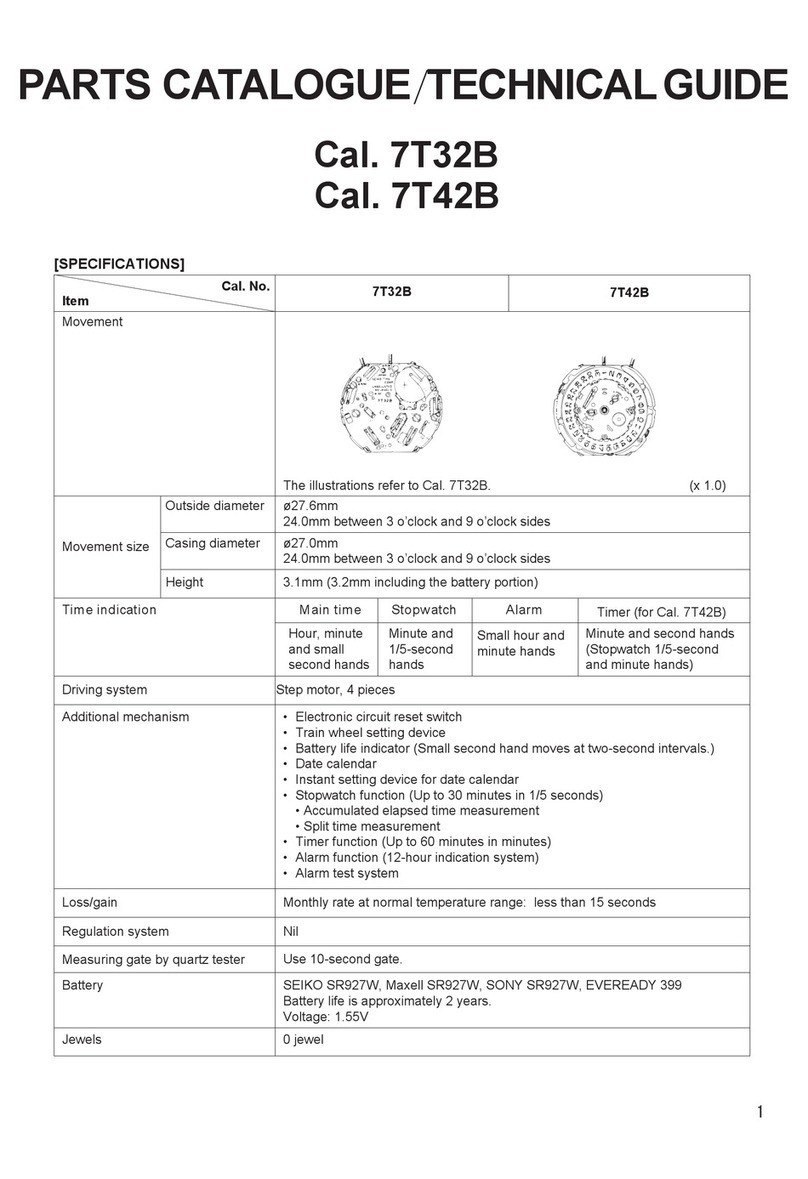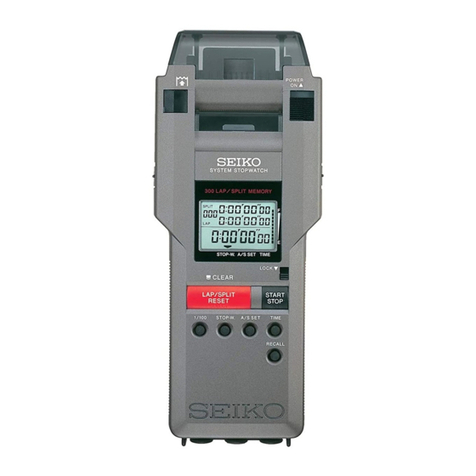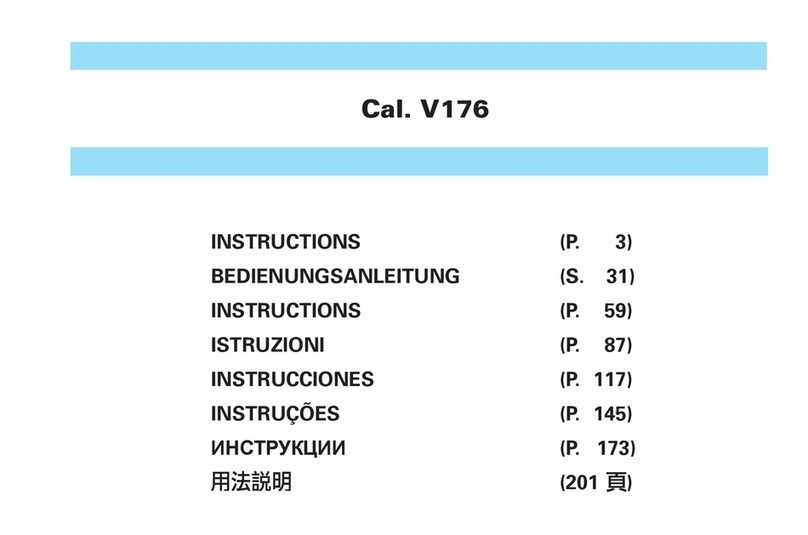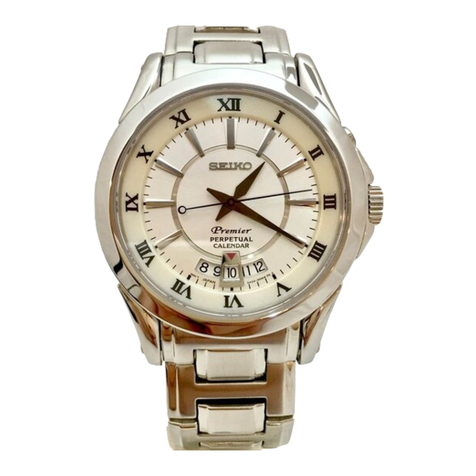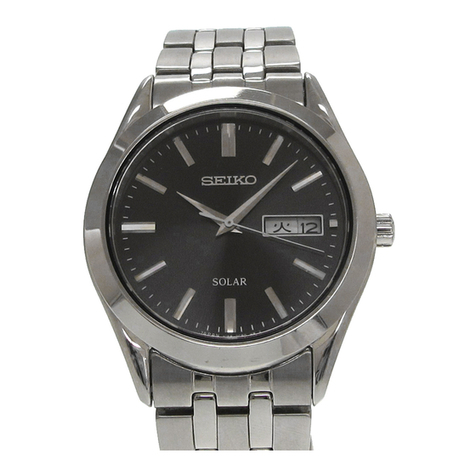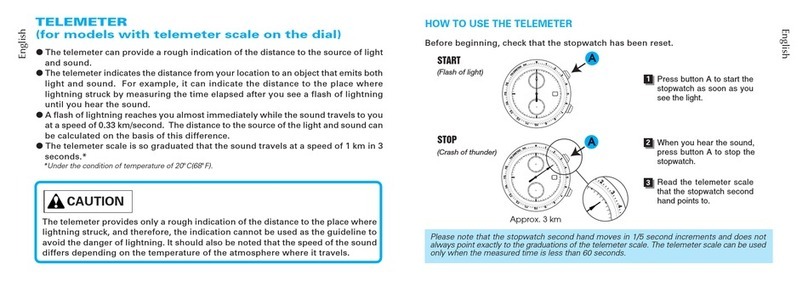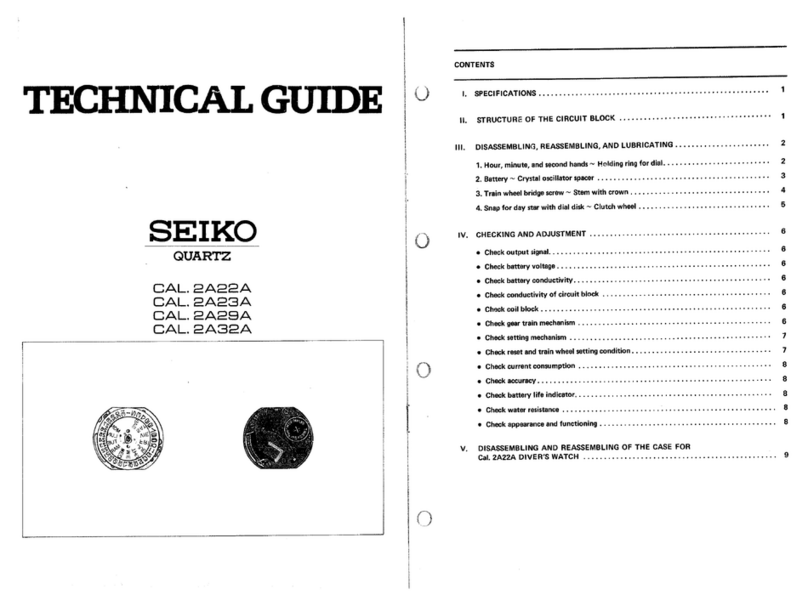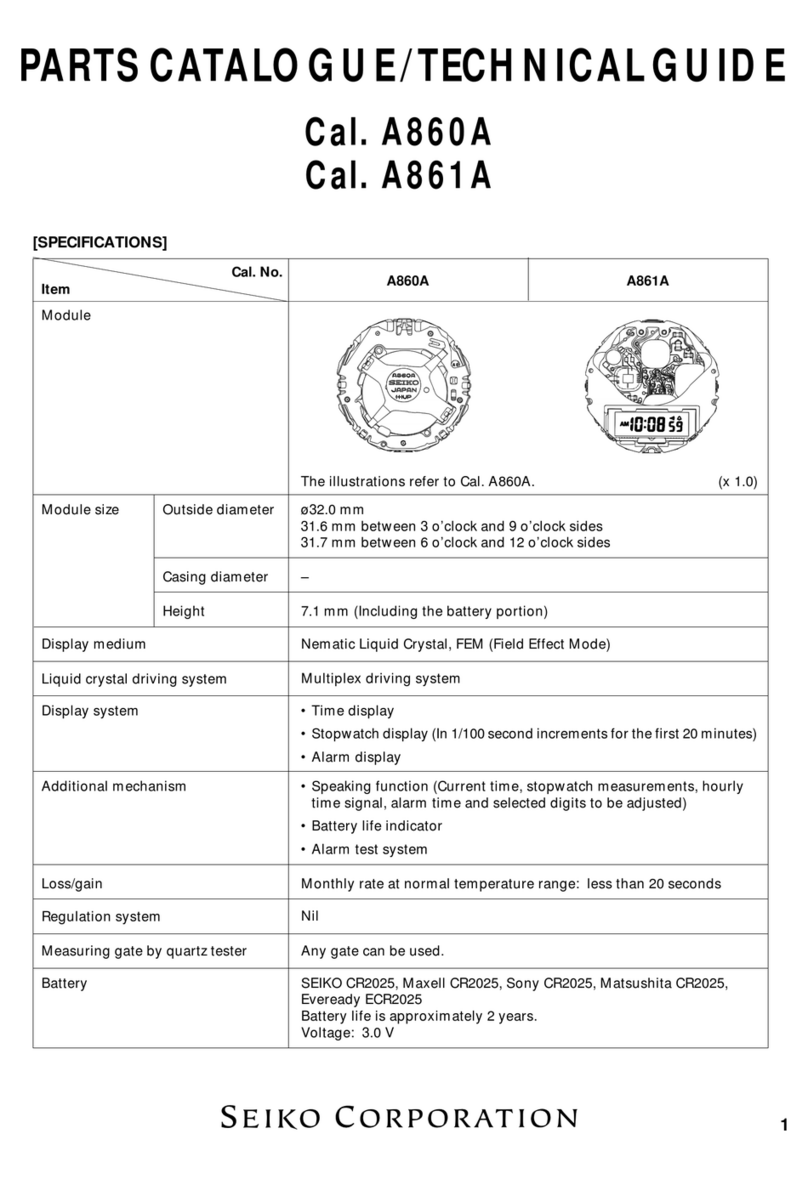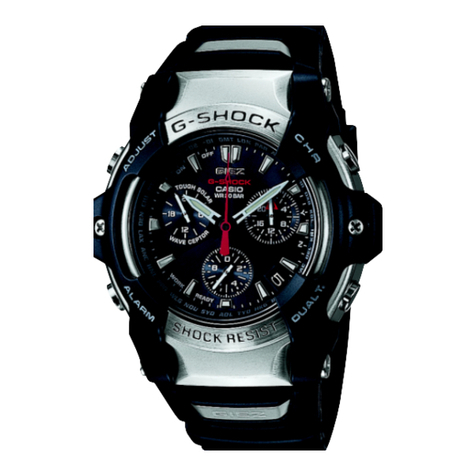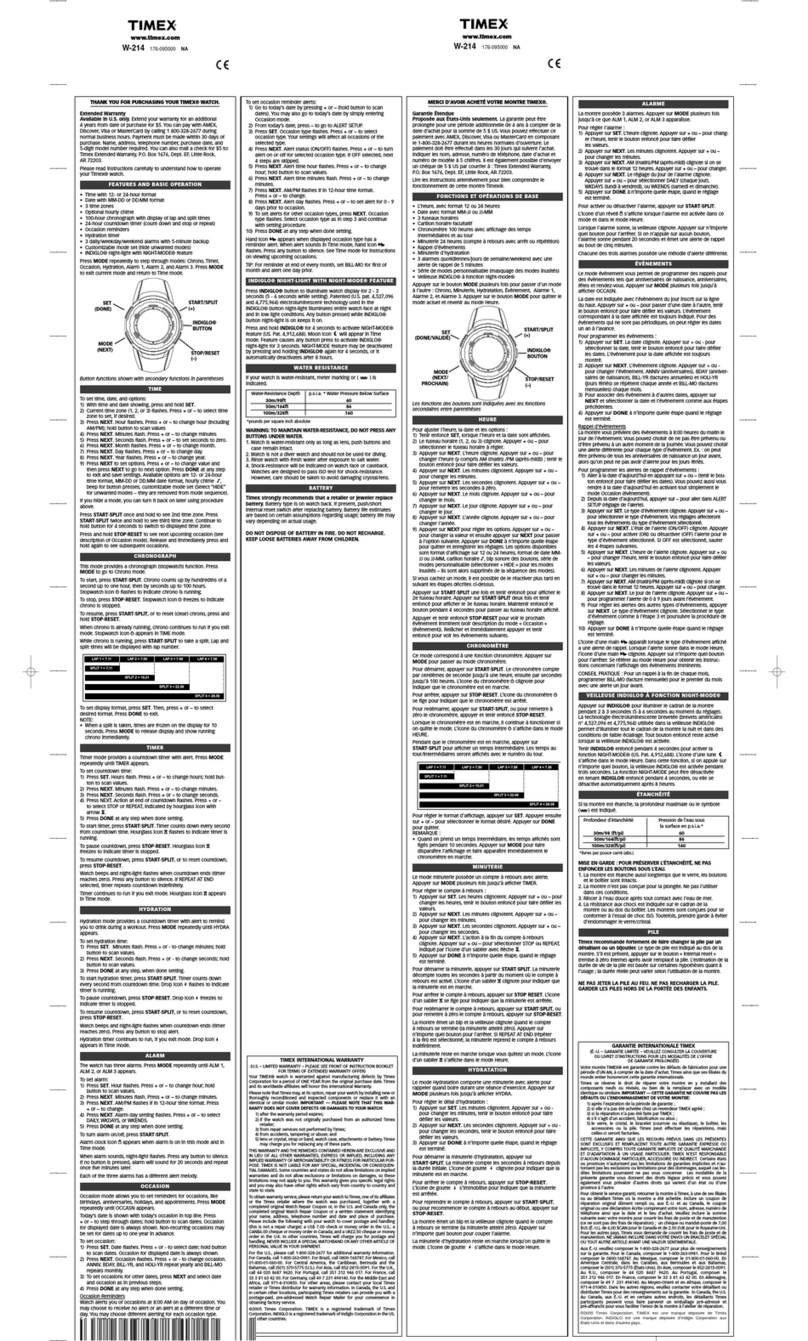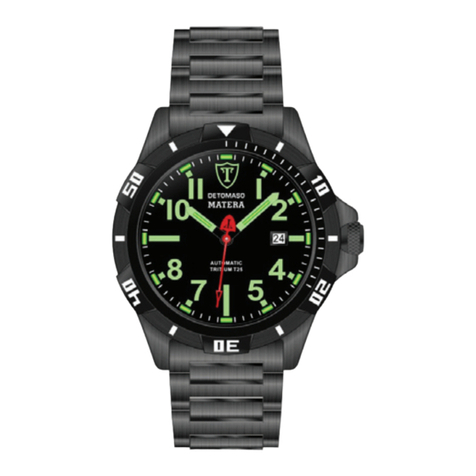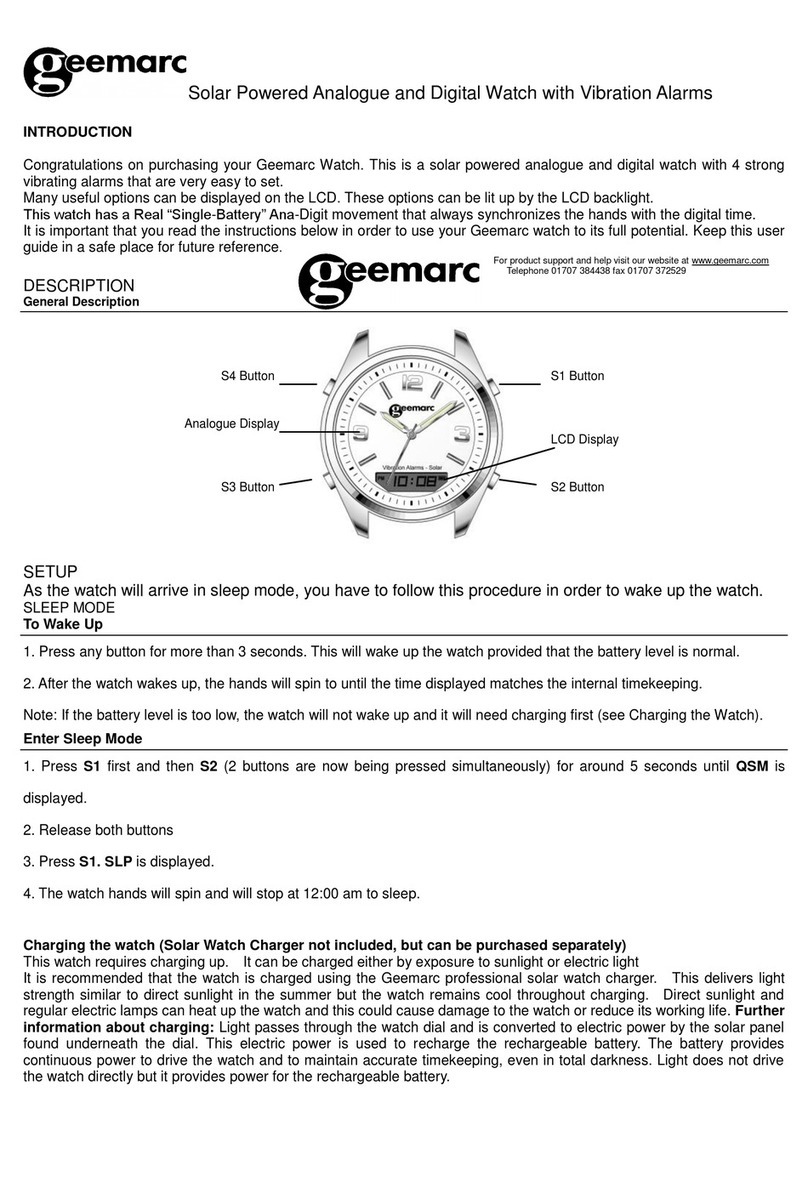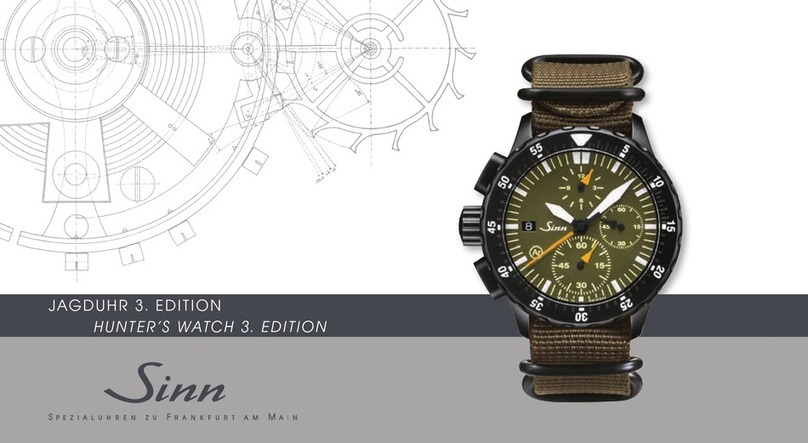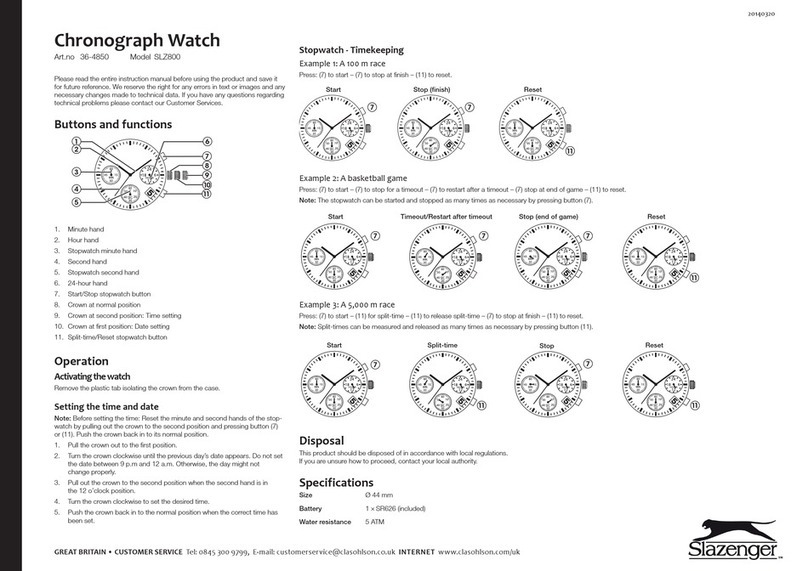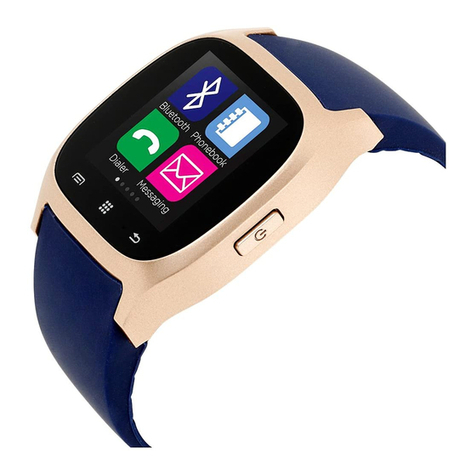
Thank you very much for choosing a SEIKO watch.
For proper and safe use of your SEIKO watch,
please read carefully the instructions in this
booklet before using it.
Keep this manual handy for easy reference.
* Length adjustment service for metallic bands is available at the retailer from
whom the watch was purchased. If you cannot have your watch repaired by
the retailer from whom the watch was purchased because you received the
watch as a gift, or you moved to a distant place, please contact SEIKO
CUSTOMER SERVICE CENTER. The service may also be available on a
chargeable basis at other retailers, however, some retailers may not undertake
the service.
* If your watch has a protective film for preventing scratches, make sure to peel
it off before using the watch. If the watch is used with the film on it, dirt, sweat,
dust, or moisture may be attached to the film and may cause rust.
EN 1
CONTENTS
1 HOW TO USE
Handling cautions ............................................ 5
Characteristics ................................................ 9
Names of the parts and their functions .......... 11
How to use the button .................................... 13
Crown ............................................................ 14
2 BEFORE USE
Before Use .................................................... 15
3
HOW TO SET THE TIME (RADIO SIGNAL RECEPTION)
Setting the time, date and day by receiving a
radio signal
................................................... 17
Mechanism of radio signal reception ......... 17
Automatic reception and manual reception
...... 18
Reception environment ................................. 19
Radio signal reception range indication ..... 19
Radio signal reception range: Japan (JJY)
....... 20
Radio signal reception range: China (BPC)
...... 21
Radio signal reception range: U.S.A. (WWVB)
..... 22
Radio signal reception range: Germany
(DCF77), UK (MSF) ................................... 23
To improve radio signal reception .............. 24
Environments in which it is difficult to
receive a radio signal ................................. 25
How to check the reception status ................. 27
How to display the reception results .......... 27
EN 2
4 WORLD TIME FUNCTION
How to use the world time function ................ 29
World time function .................................... 29
How to select the time zone (How to display
the local time around the world) ..................... 31
Time zone display and time difference table
..... 33
What is a time zone? ................................. 35
Q&A for the world time function ................. 36
About dual time display ................................. 37
About sub dial ............................................... 38
How to set the sub dial ............................... 38
5 SOLAR CHARGING FUNCTION
Charging the battery ...................................... 40
How to charge the battery .......................... 40
Guide to charging times ............................. 41
About energy ................................................. 42
Energy depletion forewarning function (Two-
second interval movement and Five-second
interval movement) .................................... 42
Power save function .................................. 43
6
TO PRESERVE THE QUALITY OF YOUR WATCH
Power Source ................................................ 44
Daily care ...................................................... 46
Performance and type ................................... 47
Lumibrite ....................................................... 48
Water resistant performance ......................... 49
Magnetic resistant performance .................... 50
Band .............................................................. 52
How to use tri-fold type clasp for leather band
(Special clasps) ............................................. 55
How to use an adjustable three-fold clasp
(Pointed tip diving type) ................................. 61
How to use an easy adjust type clasp ............ 65
After sales service ......................................... 68
EN 3

